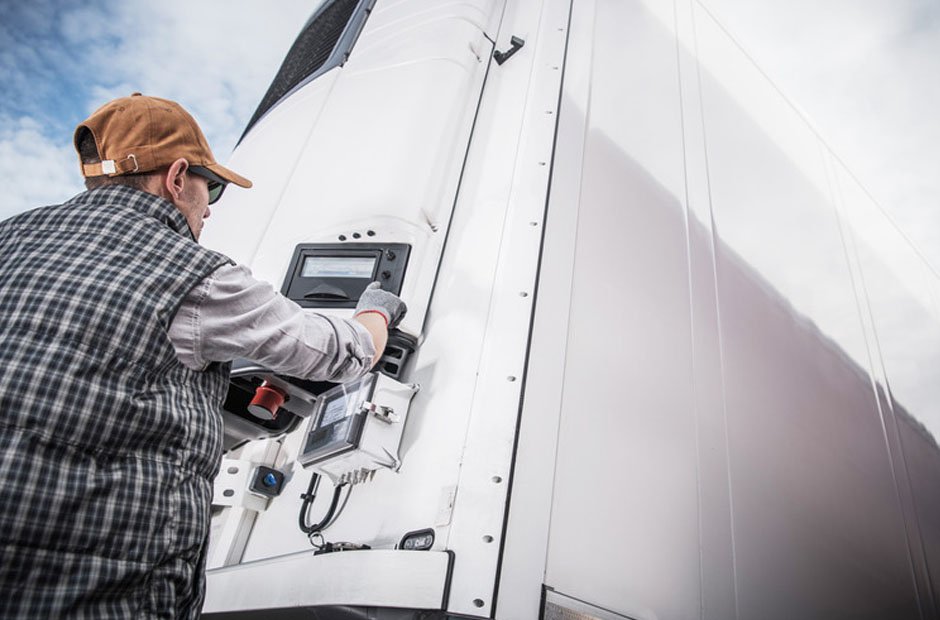The world of logistics is complex and ever-evolving, but few areas present as many challenges as the transportation of cold cargo. Ensuring that perishable goods, such as food, pharmaceuticals, and other temperature-sensitive items, reach their destination in optimal condition requires precision, reliability, and cutting-edge technology. This is where tracking technologies for cold cargo come into play, transforming the way we manage cold transport and safeguarding the integrity of our most delicate shipments.
The Importance of Cold Chain Management
Cold chain management refers to the process of transporting temperature-sensitive products along a supply chain through thermal and refrigerated packaging methods and logistics. It is crucial for industries that rely on the integrity of their products, including the food industry, pharmaceuticals, and biotechnology. Maintaining the right temperature is essential to prevent spoilage, ensure efficacy, and meet regulatory requirements.
Refrigerated transport is a cornerstone of the cold chain, enabling goods to move from one location to another while maintaining a specific temperature range. However, merely keeping goods cold isn’t enough; tracking and monitoring these conditions throughout the journey is essential to ensure they remain within safe parameters.
Advanced Tracking Technologies
Innovations in tracking technologies have revolutionized cold cargo logistics, providing greater control, visibility, and assurance. Here are some of the most significant advancements:
- GPS and IoT Integration: The integration of Global Positioning System (GPS) and Internet of Things (IoT) technology has transformed the ability to monitor and track refrigerated cargo in real-time. GPS provides precise location data, while IoT devices collect and transmit data on temperature, humidity, and other environmental conditions. This combination allows for constant monitoring and immediate response to any deviations from the required conditions.
- Wireless Sensor Networks: These networks consist of spatially distributed sensors that collect data and communicate it wirelessly to a central system. For cold cargo, wireless sensor networks monitor temperature, humidity, and even light exposure within containers. The data collected ensures that any variations are detected early, and corrective actions can be taken promptly to prevent spoilage.
- RFID Technology: Radio Frequency Identification (RFID) tags are used to track products at various points in the supply chain. RFID tags can store information about the product, including its temperature history. They enable quick scanning and data collection, ensuring that all items in a shipment have been maintained at the correct temperature.
- Blockchain for Transparency: Blockchain technology is gaining traction in cold chain logistics for its ability to provide an immutable record of transactions and conditions. Each step in the supply chain is recorded in a blockchain ledger, offering transparency and traceability. This is particularly useful in industries like pharmaceuticals, where regulatory compliance and authenticity are critical.
- Temperature Data Loggers: These devices are placed within shipments to continuously record temperature data throughout the journey. Data loggers can be standalone or connected via Bluetooth to mobile devices for real-time monitoring. They provide a detailed record that can be analyzed to ensure compliance with temperature standards.
- Smart Containers: Equipped with advanced sensors and communication technology, smart containers offer real-time tracking and monitoring of temperature-sensitive cargo. These containers can adjust internal conditions automatically in response to external changes, ensuring that the cargo remains within the desired temperature range.
Benefits of Advanced Tracking Technologies
The integration of advanced tracking technologies in cold cargo logistics offers numerous benefits:
- Enhanced Visibility: Real-time monitoring and tracking provide complete visibility into the location and condition of cargo at all times. This transparency helps in managing and mitigating risks associated with temperature deviations.
- Improved Compliance: Many industries have strict regulations regarding the transportation and storage of temperature-sensitive products. Advanced tracking technologies help ensure compliance by providing accurate and detailed records of conditions throughout the supply chain.
- Reduced Spoilage and Waste: Continuous monitoring and immediate alerts enable quick action to address any issues, reducing the risk of spoilage and waste. This not only protects the quality of the goods but also saves costs associated with lost products.
- Increased Efficiency: Automation and real-time data collection streamline logistics operations, reducing manual checks and interventions. This leads to faster decision-making and more efficient handling of cold cargo.
- Customer Assurance: For businesses, being able to guarantee the integrity of their products builds trust with customers. Detailed tracking and monitoring provide assurance that the products they receive have been handled correctly and are safe to use.
Real-World Applications
- Food Industry: Ensuring that perishable food items remain at safe temperatures throughout transport is critical to prevent foodborne illnesses and maintain quality. Technologies like GPS, IoT, and RFID are used to monitor shipments of fresh produce, dairy, meat, and seafood. Smart containers and data loggers help track temperature fluctuations and maintain the cold chain from farm to table.
- Pharmaceuticals and Healthcare: Medications, vaccines, and other medical supplies often require strict temperature control to remain effective. Advanced tracking technologies ensure that these products are stored and transported within the required temperature ranges. Blockchain technology, in particular, is used to verify the authenticity and integrity of pharmaceutical products, preventing counterfeit drugs from entering the supply chain.
- Biotechnology: Biological samples and reagents used in research and diagnostics are highly sensitive to temperature changes. Real-time monitoring and smart containers ensure that these materials are transported safely, preserving their viability and reliability for scientific applications.
Future Trends
As technology continues to evolve, the future of cold cargo tracking looks promising. Emerging trends include:
- AI and Machine Learning: Artificial intelligence and machine learning algorithms can analyze vast amounts of data collected from tracking devices to predict potential issues and optimize logistics processes. Predictive analytics can help anticipate temperature deviations and recommend proactive measures to prevent spoilage.
- Edge Computing: Edge computing involves processing data closer to where it is generated, reducing latency and enabling faster decision-making. In cold cargo logistics, edge computing can facilitate real-time adjustments to container conditions based on immediate data analysis.
- Sustainability Initiatives: As the logistics industry strives for greater sustainability, tracking technologies will play a key role in optimizing routes, reducing energy consumption, and minimizing environmental impact. Innovations like solar-powered sensors and energy-efficient smart containers will contribute to greener cold chain logistics.
Final Thoughts
Tracking technologies for cold cargo are indispensable in today’s logistics landscape. From GPS and IoT integration to blockchain and smart containers, these innovations provide the tools needed to ensure the safe and efficient transport of temperature-sensitive goods. As we continue to face global challenges related to food safety, healthcare, and environmental sustainability, advanced tracking technologies will be at the forefront of protecting our valuable cold cargo. By embracing these technologies, we can build a more reliable, transparent, and resilient cold chain, quenching the world’s thirst for safe and high-quality products.







